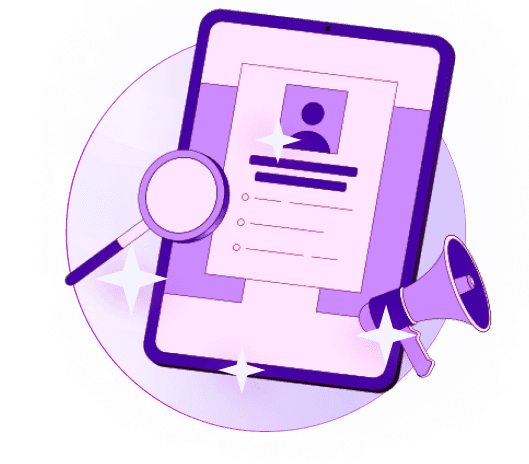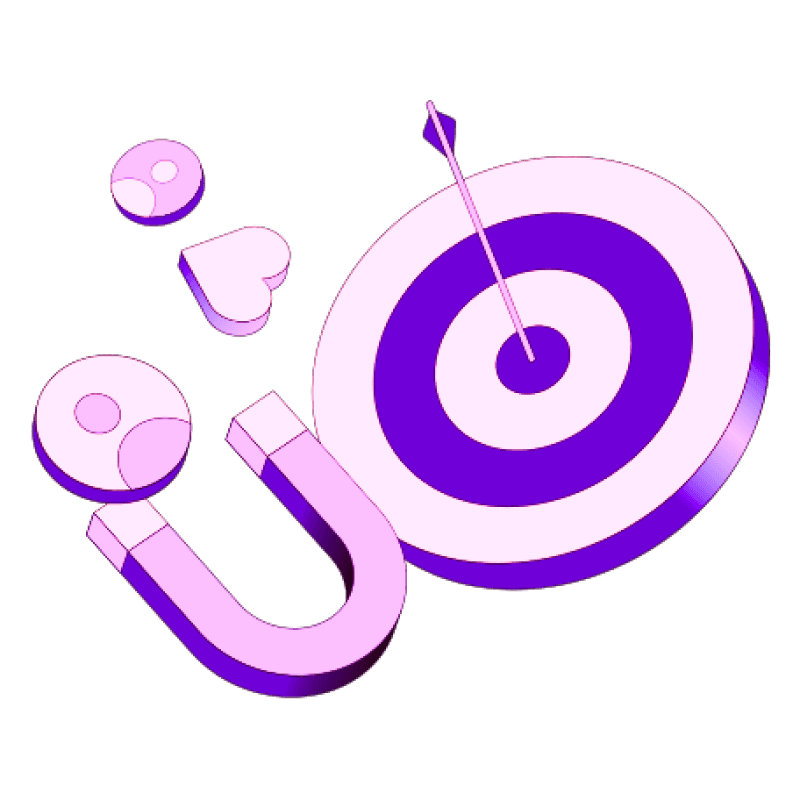Blogs
Articles

Sales Triggers: A No-Nonsense Guide for Busy Sales Teams
Sales triggers remain one of the most overlooked opportunities in B2B sales today. Forrester Research suggests they can improve win rates by up to 74%, yet many teams struggle to use them well. The challenge of prospecting affects 40% of salespeople, and understanding sales triggers could reshape your results.
This piece gets into what sales triggers are and shows proven examples that deliver results. You'll learn how to implement them in your existing sales process. Your team will identify and act on the right opportunities quickly, whether you want to cut down those 18 calls needed to reach a buyer or just make your prospecting work better.
What is a sales trigger?
A sales trigger is any event that creates a perfect chance for sales reps to reach out to prospects. These triggers act as clear signs that show when potential buyers might welcome your message.
Timing is everything in B2B sales. The right moment can make the difference between a message that strikes a chord and one that misses the mark. Sales teams can use these trigger events to pinpoint when buyers are ready to talk, rather than making educated guesses.
Sales triggers exist in many forms at every stage of the sales process. They create natural openings to start conversations with new leads and build stronger bonds with existing customers. These events open doors that might stay closed otherwise.
A company's leadership change often leads new executives to assess their current vendors and solutions. This creates an excellent chance to present your product or service. Companies that receive new funding are eight times more likely to make purchases as they plan to invest in growth.
Other common trigger events include:
Company expansions or new office locations
Mergers and acquisitions
New product or service launches
Major industry changes affecting a prospect's business
Company restructuring or personnel changes
Sales teams can connect with ready buyers much faster by spotting and acting on these triggers. Research proves that sales representatives who reach out quickly after a trigger event convert leads more often.
Sales triggers are versatile tools. They help start conversations with new prospects and remind teams to nurture existing relationships. Some sales intelligence platforms let teams merge these triggers into efficient workflows. This generates individual-specific outreach when specific events happen.
Sales teams gain a strategic edge in today's competitive marketplace by discovering the potential of these key moments.
What are trigger words in sales?
Trigger words work as powerful tools that spark quick emotional responses from prospects. Sales triggers are events, but trigger words are specific phrases that push listeners to take action—like making a purchase, booking a demo, or agreeing to talk more.
People connect with emotion better than plain information. Trigger words tap into shared human experiences that make prospects feel understood and guide them toward desired actions. Research proves that content that brings out emotional responses gets more engagement than neutral messages.
Trigger words fit into several psychological categories:
Urgency/Lack: Words like "limited," "exclusive," and "now" create quick action impulses
Trust-Building: Terms such as "guaranteed," "proven," and "trusted" build credibility
Curiosity: Phrases with "secret," "reveal," or "find" spark interest and make people participate
Value/Benefit: Words highlighting "free," "save," or "improve" show worthwhile outcomes
These words work well, but timing plays a huge role. A sales psychology study points out that "Trigger words can drive prospects away if used at the wrong time." Smart salespeople carefully pick which terms to use at specific points in their conversations.
Smart use of trigger words can boost conversion rates dramatically. You could say "Our course reveals the secret to marketing" instead of "Our course teaches marketing"—this instantly makes benefits more appealing.
6 proven sales trigger events to watch
These six sales trigger events can boost your success rate by helping you connect with prospects at the right time:
1. New executive appointments
Companies hiring new C-suite executives create perfect timing for outreach. New leadership usually reviews existing vendors and solutions, which makes them open to fresh ideas. These executives aim to make their mark quickly through strategic changes. Sales representatives achieve much higher conversion rates by connecting with new executives early in their tenure compared to cold outreach.
2. Company funding rounds
Companies that secure new funding become prime sales targets. The completion of a funding round makes organizations eight times more likely to make purchases as they plan to invest in growth. Series A rounds typically raise between $2 million and $15 million, while Series B companies reached a median valuation of $35 million in 2022. Your awareness of their growth trajectory shows through immediate outreach after funding announcements.
3. Mergers and acquisitions
M&A activities create excellent buying possibilities. Retail executives' plans show that 53% will make moderate-to-major investments in M&A by 2025. Companies often reassess vendors, upgrade systems, and look for new solutions during transitions. Organizations going through mergers usually aim to scale up operations or acquire diversified revenue streams, which creates multiple entry points for sales teams.
4. New product or service launches
Product launches reveal a company's growth direction. Companies announcing new offerings typically need complementary solutions, training, or support services. Your solution can enhance their new initiative's success at this stage. Company websites and press releases help identify these chances.
5. Major industry developments
Companies must adapt quickly to major industry changes. Technological advancements or market disruptions create needs for new solutions. Businesses become more receptive to products offering competitive advantages as they adapt to changing markets.
6. Legal or regulatory changes
New compliance requirements create urgent pain points. Companies often need process modifications and new tools due to regulatory or industry-specific legislation changes. Many companies updated their systems after GDPR implementation. Your solution can help them maintain compliance while adapting to regulatory requirements.
How to track and detect sales triggers effectively
Top sales teams use specialized tools and strategies to spot opportunities before their competitors. A systematic approach to tracking sales triggers makes your timing and relevance better.
Using Google Alerts and LinkedIn
Google Alerts is a free, powerful tool that helps you monitor trigger events. Here's how to set up effective alerts:
Visit google.com/alerts
Enter specific search terms like competitor names, target accounts, or industry keywords
Click "Show options" to customize frequency and sources
Select "Create Alert" to receive notifications directly to your inbox
Sales Navigator users can save leads and accounts on LinkedIn to get notifications about job changes, company mentions in news, and content shares. On top of that, LinkedIn's job alerts feature lets you know when prospects update their employment status.
Monitoring press releases and industry news
Press release tracking shows strategic company moves before they become accessible to more people. Media monitoring tools make this process automatic by pulling information from multiple sources, though manual monitoring works too. PRNewswire and similar platforms gather announcements in various industries, and you can filter them by company size, sector, or location.
Utilizing sales intelligence tools
Sales intelligence platforms raise trigger event detection by combining up-to-the-minute data analysis with predictive analytics. These tools help you find high-value prospects based on buying signals and firmographic data. They confirm CRM information so reps can focus their energy where it matters most, while tracking online activity like visits to pricing pages or competitor comparisons.
Setting up alerts for job changes and funding
Job change alerts are a great way to get sales opportunities. Decision-makers often review existing solutions and look for new ones when they switch roles. Funding announcements point to companies ready for growth—businesses with new funding are eight times more likely to make purchases.
Crunchbase lets you create automatic alerts for funding rounds, acquisitions, IPOs, and company news. You can select which updates you want to receive notifications for after setting up prospect lists. This ensures you're always first to know when prospects are ready to buy.
How to act on sales triggers for better results
Finding trigger events is only half the battle. Smart, timely action sets top performers apart from others. Sales professionals who act quickly on trigger events are 74% more likely to win deals. Here's how you can make the most of these golden chances.
Crafting personalized outreach messages
Personalization is the life-blood of trigger-based selling. Generic messages perform worse than trigger-specific outreach. Personalized messages can improve revenue by up to 40% compared to standard templates.
Your compelling messages should:
Study the job description to understand KPIs for new executives
Look at what roles companies hire to identify business goals
Include specific details from trigger events to show awareness
To cite an instance, a company that received funding needs more than generic "congratulations" messages. Study their funding announcement to understand their growth trajectory and arrange your solution to match their needs.
Timing your pitch for maximum effect
Your timing can determine success in trigger-based outreach. The first seller who contacts a decision maker after a trigger event is five times more likely to win the sale.
New executives with buying power make valuable targets. They're 10 times more likely to bring in new products or services and usually start looking at new vendors within their first 90 days.
Companies become eight times more likely to make purchases after major trigger events like funding rounds. They actively seek investments for growth during this period.
Using trigger-based email templates
Successful trigger emails follow specific frameworks that encourage engagement:
The Observation + Question framework: Begin with a relevant observation about the trigger, then add a question that starts conversation.
Mousetrap + Context: Give background information about why you're reaching out now.
Detailed approach: Mix observation, insight, problem identification, and social proof before you encourage discussion.
Avoiding common mistakes in trigger-based selling
Sales professionals often hurt their chances despite perfect timing. Experts call the biggest mistake the "Bait & Pitch"—connecting on LinkedIn followed by immediate product pushing. This method works sometimes but pushes most prospects away.
Another frequent error puts too much focus on ROI calculations instead of emotional drivers. Note that buying decisions come from both rational and emotional factors.
The final mistake involves misreading trigger data. Marketers sometimes miss important signals or draw wrong conclusions from customer actions. This leads to missed opportunities or time wasted on poor-fit prospects.
Conclusion
Sales triggers give busy sales teams a real edge. This piece shows how these events can boost win rates by 74% and increase conversion rates by an amazing 400%. The gap between average and exceptional sales performance comes down to spotting and acting on these key moments.
Timing beats almost everything else in B2B sales. Sales pros who quickly spot new executive appointments, funding rounds, or regulatory changes get ahead of their competitors. Those who wait miss chances that rarely come back.
You don't need complex systems to track these triggers. Google Alerts, LinkedIn monitoring, and press release tracking work great as starting points. Teams looking for more advanced options should look into dedicated intelligence platforms that automate detection and response.
Want to reshape your sales approach with trigger-based selling? Check out Persana.ai for resources that help sales teams spot and act on the best chances.
FAQ
Sales teams often have questions when they start using trigger-based selling. Here are some common questions that help explain the concept better.
What triggers the sales order system?
Enterprise systems use specific triggers to route sales orders through different workflows. Oracle documentation states that companies need three main trigger types to process sales orders through revenue recognition. The company's hierarchy triggers set the most important fields and their assessment order.
A sales order trigger system looks at:
Transaction-specific data fields
Company's hierarchy settings
Date parameters for revenue recognition
Configuration values that determine processing eligibility
Companies customize these triggers to match their business processes and ensure smooth transaction flow through the system.
What are market triggers?
Market triggers drive buying decisions across entire market segments. Unlike individual sales triggers, market triggers impact many potential customers at once. These include new industry regulations, economic changes, technological breakthroughs, or seasonal patterns that create systemic demand.
Market triggers typically fall into these groups:
Economic triggers: Economic condition changes like interest rate updates
Regulatory triggers: New laws that affect industries
Competitive triggers: Strategic moves by market leaders
Technological triggers: New breakthroughs that require adaptation
Seasonal triggers: Regular patterns that influence buying behavior

Create Your Free Persana Account Today
Join 5000+ GTM leaders who are using Persana for their outbound needs.
How Persana increases your sales results
One of the most effective ways to ensure sales cycle consistency is by using AI-driven automation. A solution like Persana, and its AI SDR - Nia, helps you streamline significant parts of your sales process, including prospecting, outreach personalization, and follow-up.



